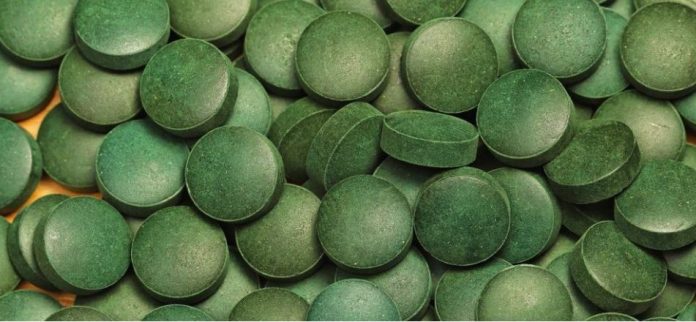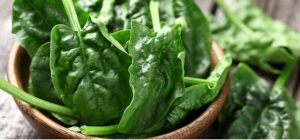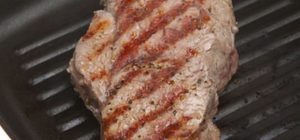A lack of iron in the diet is far more prevalent than most people realize, particularly for women, and their energy levels can suffer because of it.
This page will investigate the health benefits of iron, as well as some of the best food sources and why multivitamin supplements and ‘fortified’ foods are probably not the best option for increasing your iron intake.
Iron Deficiency Symptoms
Iron deficiency is largely due to eating primarily processed foods and the popularity of certain foods and drinks that can block iron absorption during digestion.
The mineral iron is primarily used for hemoglobin production to make the red blood cells the transport oxygen around your cardiovascular system. It is so vital to life that your body stores around 30% of your iron for when daily intake is low.
Once this stored iron depletes though, oxygen will begin to circulate more slowly in your blood. Symptoms of mild iron deficiency include tiredness and fatigue, headaches, irritability and dizziness.
Serious iron deficiency is known as anemia and symptoms include constant and ongoing fatigue, regular headaches, problems thinking clearly, cold hands and feet, pale skin, irregular heartbeat, difficulty breathing, chest pains, dizziness and low immunity with increased infections.
Anemia is a serious, and even life-threatening condition and it’s important to seek the advice of a knowledgeable health care professional if you suspect you’re deficient in iron.
Most at risk of being anemic are women, largely due to the extra iron required for menstruation. Athletes, like long distance runners and cyclists, and growing teenagers also have greater iron needs and require more of the mineral in their daily diet.
Those eating vegan and vegetarian may also need to make sure they get a good range of iron rich plant based foods into their meals. It would also be especially important for vegans to avoid having many of the iron antagonists ahead at the same time.
Iron for Energy
Having a good supply of iron in your diet allows for optimal hemoglobin production and oxygen transportation throughout your cardiovascular system. And you don’t necessarily have to be deficient to feel the difference.
Many people notice an increase in their daily energy levels, mental clarity and ability to focus and get things done when they include more of the iron rich foods ahead in their diet.
Other iron benefits include helping white blood cell production to fight bacteria and viruses for increased immunity. Constant colds and infections and difficulty recovering could be a sign of low iron in your body.
Iron is also found in a muscle protein called myoglobin that is needed for the contraction of muscles. Ongoing muscle weakness may also indicate an iron deficiency, though many other nutritional deficiencies could also be responsible and it’s best to get this checked by a professional.
Lack of iron can even affect your brain health. Since your brain uses around a fifth of all the oxygen in your blood, it is very sensitive to low hemoglobin levels leading to reduced oxygenation of the blood.
Recommended Daily Allowance
Iron requirements vary quite a bit depending on a person’s age and sex. Detailed iron requirements for children can be found here, but for adults 19 to 50 8 mg per day is suggested for men and, more than double, a full 18 mg per day is recommended for women until menopause.
Clearly iron in the diet is much more important for women. During pregnancy the amount of iron needed increases even more, while the amount recommended during breast-feeding is actually lower.
Best Food Sources of Iron
There are two types of on your body can use – heme iron and non-heme iron.
Heme iron is found only in animal sources. Shellfish and seafood like mussels, oysters, clams and octopus and cuttlefish (calamari) are an excellent source. Liver is also particularly high.
Red meat like grass fed beef and venison is a valuable source and chicken and other white meat also contains some heme iron.
Non-heme iron is found in green leafy vegetables like spinach, collard greens and Swiss chard, asparagus, leaks, olives, and beets. Beans and pulses like kidney beans and lentils are also potential source of iron.
Many vegetables contain smaller amounts of iron so a good mix of veggies in your meals should help boost your iron supply. Many nuts and particularly pumpkin seeds are also a good source of iron and they make for a nutritious and satisfying snack.
Iron Blockers
Non-heme iron from plant sources in particular may be blocked by certain substances, sometimes called anti-nutrients, in common foods and drinks when taken at the same time as iron rich foods.
Phytic acid is a compound that can bind to minerals during digestion. It is believed to hinder iron absorption along with calcium, magnesium and zinc. Phytates like phytic acid are found primarily in grains, certain seeds, nuts and beans.
Oxalates such as oxalic acid is unfortunately found in some of the highest sources of vegetable-based iron, like spinach and other leafy greens. In large amounts these may interfere with iron absorption, but most nutritional experts would agree that the health benefits of dark leafy green vegetables far outweigh any issues with oxalates.
Polyphenols like those found in black tea, coffee, dark chocolate, berries and many fruits like apples can also interfere with iron absorption. Though these are predominantly beneficial nutrients as they are powerful free radical quenchers.
Eggs contain a protein compound called phosuitin that is believed to bind iron molecules together and interfere with absorption. While egg yolks do contain some iron they are unlikely to be a good source unless they are separated from the white.
Milk, yogurt, cheese, sardines and other high calcium foods may also interfere with your iron intake as calcium tends to outcompete iron for absorption.
A big glass of milk with your main iron rich meal of the day may not be the best idea if you’re concerned about being deficient in iron. This also explains why high calcium multivitamins are often ineffective for increasing your iron blood levels.
As you can see, there are a lot of foods that can interfere with iron absorption. With iron deficiency and anemia concerns, many grain foods were ‘enriched’ with iron, but this may be poorly absorbed since it is often eaten with the type of foods that block the mineral’s absorption.
Iron Supplements and a Safer Alternative
While too little iron can drain your energy and anemia is a serious health concern, too much iron can also be harmful.
Iron supplements may be necessary for people with very low levels, or those who have problems absorbing iron, but their use should be monitored and they should be taken carefully.
Too much iron, particularly due to excessive iron supplementation, is strongly implicated in increased oxidative stress in your body from free radicals. This can also lead to a condition known as haemochromatosis, in which vital organs like heart, liver and endocrine glands become damaged.
In my opinion, a far safer way to get your iron if you think you might be lacking is with the superfood algae spirulina.
Spirulina is very high in bio-available iron, far higher by weight than spinach or beef. 5 grams of spirulina (usually around five tablets) can provide up to 5 mg of iron, as well as a wealth of other nutritional elements like beta-carotene, gamma linoleic acid, a complete amino acid profile, B vitamins including B12 and many other vitamins and trace minerals.
The best way to take spirulina for iron is to have it away from meals containing the iron antagonists mentioned above like grain foods, milk, tea, coffee, leafy greens and others.
Having five pure spirulina tablets an hour before a meal and at least two hours after one with a big glass of water is the way I take it. Taken this way there’s a very good chance of getting the health benefits of iron in one simple go while avoiding the iron blockers mentioned above.
Many people report higher energy levels when they take spirulina regularly. Whether this is due to the extra iron they are getting or all the other benefits of this superfood, I’ve personally found it much better than synthetic multivitamins.
While the actual amounts of minerals and other nutrients like iron may be smaller in spirulina than in a multivitamin, food-based supplementation like this just seems to be far more effective in the human body.
This article is intended for informational purposes only. If you have any questions or are considering any recommendations, please consult your health practitioner.

























